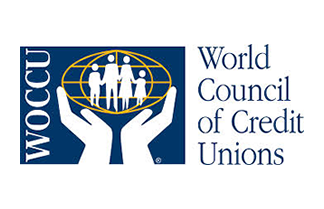What is a Credit Union?

Credit unions, called by various names around the world, are member-owned, not-for-profit financial cooperatives that provide savings, credit and other financial services to their members. Credit union membership is based on a common bond, a linkage shared by savers and borrowers who belong to a specific community, organization, religion or place of employment. Credit unions pool their members’ savings deposits and shares to finance their own loan portfolios rather than rely on outside capital. Members benefit from higher returns on savings, lower rates on loans and fewer fees on average.
Credit unions worldwide offer members from all walks of life much more than financial services. They provide members the chance to own their own financial institution and help them create opportunities such as starting small businesses, growing farms, building family homes and educating their children.
Regardless of account size in the credit union, each member may run for the volunteer board of directors and cast a vote in elections. In some countries, members encounter their first taste of democratic decision making through their credit unions.
Credit Unions vs. Other Financial Institutions
| Credit Unions | Commercial Banks | Other Microfinance Institutions (MFIs) | |
|---|---|---|---|
| Structure | Not-for-profit, member-owned financial cooperatives funded largely by voluntary member deposits | For-profit institutions owned by stockholders | Institutions typically funded by external loans, grants and/or investors |
| Clientele | Members share a common bond, such as where they live, work or worship. Service to the poor is blended with service to a broader spectrum of the population, which allows credit unions to offer competitive rates and fees. | Typically serve middle-to-high income clients. No restrictions on clientele. | Target low-income members/clients, mostly women, who belong to the same community. |
| Governance | Credit union members elect a volunteer board of directors from their membership. Members each have one vote in board elections, regardless of their amount of savings or shares in the credit union. | Stockholders vote for a paid board of directors who may not be from the community or use the bank’s services. Votes are weighted based on the amount of stock owned. | Institutions are run by an appointed board of directors or salaried staff. |
| Earnings | Net income is applied to lower interest on loans, higher interest on savings or new product and service development. | Stockholders receive a pro-rata share of profits. | Net income builds reserves or is divided among investors. |
| Products & Services | Full range of financial services, primarily savings, credit, remittances and insurance. | Full range of financial services, including investment opportunities. | Focus on microcredit. Some MFIs offer savings products and remittance services. |
| Service Delivery | Main office, shared branching, ATMs, POS devices, PDAs, cell phones, Internet | Main office, shared branching, ATMs, POS devices, PDAs, cell phones, Internet | Regular visits to the community group |
Credit Unions vs. Other Financial Institutions
| Principles | Description |
|---|---|
| 1. Voluntary and open membership | Credit unions are voluntary, not-for-profit financial cooperatives, offering affordable financial solutions to those eligible and willing to accept the responsibilities and benefits of membership, without discrimination. |
| 2. Democratic member control | Credit unions are democratic organizations owned and controlled by their members, with equal opportunity for participation in setting policies and making decisions. Therefore, each member has one vote. |
| 3. Member economic participation | Members are the owners of credit unions. As such, they contribute to the capital of their credit union and directly impact its financial success. Members realize benefits in proportion to their relationship with their credit union and use of its products and services. |
| 4. Autonomy and independence | Credit unions are independent, self-reliant organizations controlled by their member-owners, not outside stockholders. Credit unions entering into agreements with other organizations must ensure continued democratic control by the members. |
| 5. Education, training, and information | Credit unions educate and train members, employees and volunteers so they can contribute effectively to the development of the credit union. In addition, credit unions provide financial education for their members and the public. |
| 6. Cooperation among cooperatives | Credit unions serve their members most effectively and strengthen the cooperative principles by working with other cooperatives through local, state, regional, national, and international structures. |
| 7. Concern for community | Credit unions work for the sustainable development of communities through policies developed and accepted by the members. Credit unions seek to achieve a greater good through responsible corporate citizenship. |
